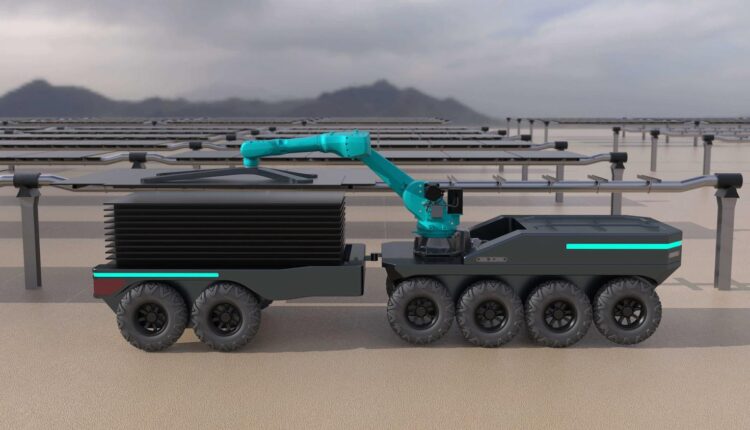The solar energy industry is facing a significant challenge – a shortage of skilled workers to install the rapidly growing number of solar panels across the United States. Enter Cosmic Robotics, a startup that has developed an innovative solution to address this issue and potentially revolutionize the solar installation process.
Cosmic Robotics has created a robotic assistant designed to handle the physically demanding aspects of solar panel installation. This eight-wheeled vehicle, equipped with a robotic arm and advanced sensors, can lift and place heavy solar panels weighing up to 90 pounds with remarkable precision.
The robot, named Cosmic-1A, operates alongside human workers, allowing them to focus on tasks requiring greater dexterity and decision-making. By shouldering the burden of heavy lifting, the robot aims to make the job less physically taxing and more appealing to a wider range of workers.
James Emerick, co-founder and CEO of Cosmic Robotics, highlighted the challenges faced by solar installers, particularly in remote desert locations. “It’s terrible work in remote places,” Emerick stated, emphasizing the need for technological assistance in the field.
The Cosmic-1A robot can install a solar panel every 30 to 40 seconds, matching the speed of the fastest human installers. However, unlike humans, the robot can maintain this pace for extended periods without fatigue. This increased efficiency could potentially double the installation rate of solar panels, addressing the growing demand for renewable energy infrastructure.
Cosmic Robotics recently secured $4 million in pre-seed funding, led by Giant Ventures with participation from HCVC, MaC Ventures, and several angel investors. The company plans to use this funding to manufacture and deploy its robots in production environments by the end of the year.
The development of these robotic assistants comes at a crucial time for the solar industry. The U.S. Bureau of Labor Statistics projects a 48% increase in the number of solar installers by 2033. However, even with this growth, the industry is expected to face a shortage of skilled workers.
The potential impact of Cosmic Robotics’ technology extends beyond addressing labor shortages. It could significantly accelerate the deployment of solar farms, particularly for data centers that are increasingly turning to renewable energy sources to meet their power needs.
As the demand for computing power continues to surge, the speed of deploying solar infrastructure has become a critical factor. Emerick noted, “Speed of deployment is all that really matters. You just can’t build these things fast enough, can’t bring compute online fast enough.”
With the introduction of robotic assistants like Cosmic-1A, the solar energy industry may be on the cusp of a significant transformation, potentially accelerating the transition to renewable energy and supporting the growing infrastructure needs of the digital age.


